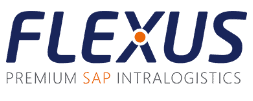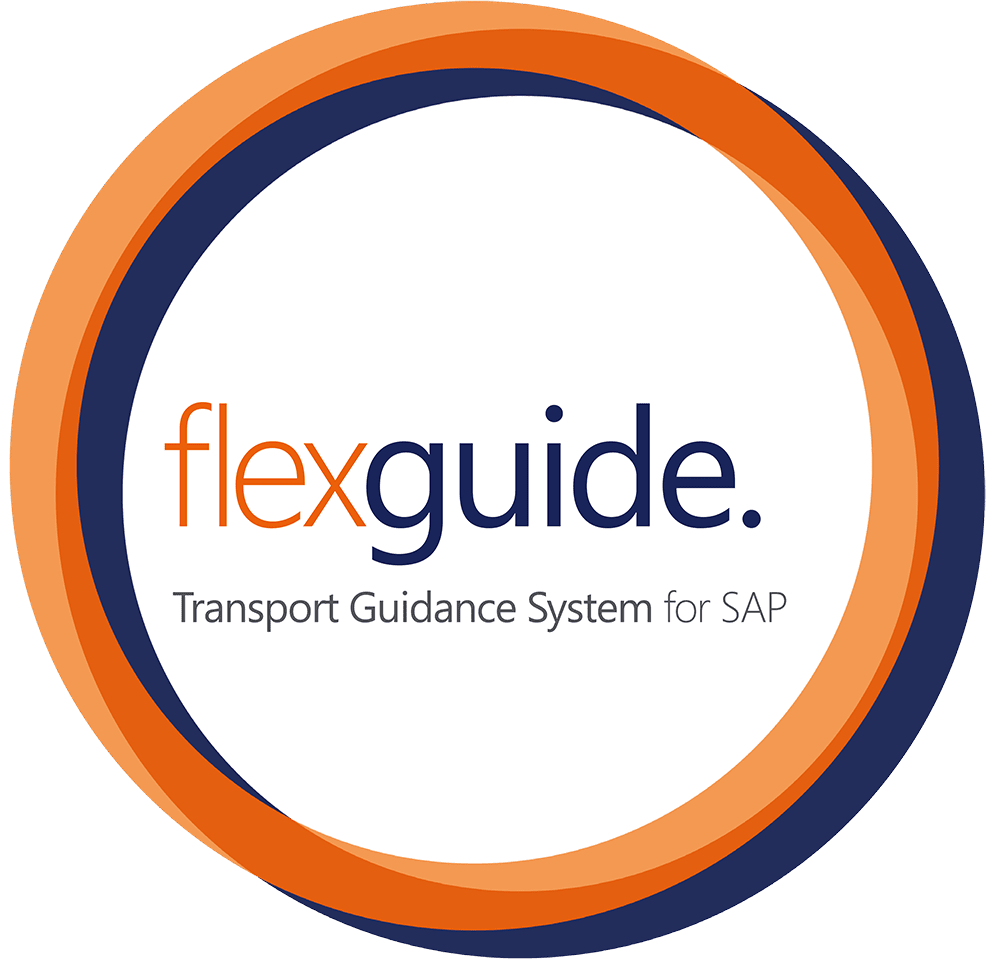This article is intended to show the way to modern logistics. It is intended to illustrate from which (viewing) directions innovations arise and where the journey leads. On the way there, the developments of some logistics solutions are shown as examples, as well as their areas of application, limits and those hurdles that had to be overcome.
Automation exit: Siemens
The increasing performance and the merging of the technology areas OT (Operational Technology) and IT (Information Technology) open up completely new possibilities for systems with very high autonomy in logistics. Industrial IoT, industrial edge computing and industrial communications (e.g. 5G) enable the end-to-end digitalisation of processes and the integration of all systems involved for flexible production and logistics of the future.
Exit Integration: Flexus
Modern product development is increasingly tailored to the individual wishes and needs of the customer. As a result, modern logistics must cope with an increasingly granular and diverse flow of goods. This development is expected to intensify in the future.
The steep mountain road: Digital transformation as a pathfinder
Increasing digitalisation can open up a solution path here. For example, managing and scaling logistical processes is more clearly arranged in digital form. In addition, intuitively designed interfaces can relieve employees and thus save the employer time and money. Finally, small-step recording of the flow of goods not only creates unprecedented transparency about the whereabouts and condition of goods, but also provides the basis for further optimisations, error analyses and forecasts. This can be achieved not least by increasingly connecting the individual logistics systems with industrial IoT components. This enables the logistics systems to independently report back context-specific information and carry out actions.
The serpentines 1: Digital integration of production and logistics systems
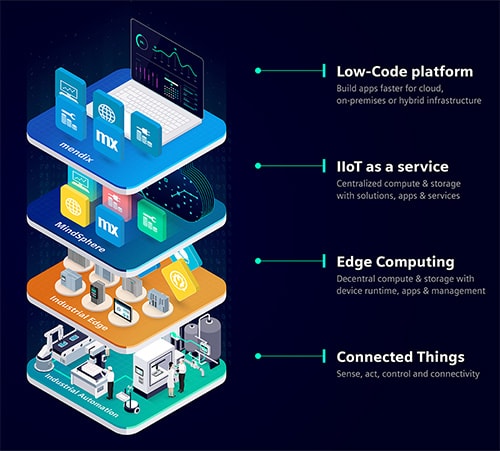
In fully digitalised and integrated systems, the transport systems used, the infrastructure components, but also the production systems independently record all the operational information required for resource planning and goods flow planning and control and automatically supply this to the coordination components.
The challenge here is to equip the individual logistics systems with the corresponding acquisition, processing and communication components. The portfolio of automation components available today, which integrate seamlessly into industrial IoT components, offers a corresponding solution.
Together with corresponding communication components that can also be used on the move, integrations can be realised in resource and goods flow management systems. This enables end-to-end digitalisation of production and logistics that meets industrial manufacturing requirements.
Industrial edge computing can address the increasing demands for real-time optimisation and continuously changing computing tasks that need to be performed close to the source of the data and the transport and manufacturing process.
With edge computing, computing power is placed decentrally in the systems close to the data source and the computing demand. By using advanced device and software management technologies, it is possible to manage these systems holistically despite the decentralisation. Other challenges of the digitalisation of production and logistics systems, such as engineering, security and extensions of the digitalised systems, are also addressed.
In addition to holistic device and software management, so-called “low code” concepts are also used here. Low code solutions enable the creation of complex software applications for operational use without in-depth programming knowledge. Abbildung 1 uses the Siemens industrial IoT stack as an example to show the functional levels that are typically used in the digitalisation and connection of production and logistics systems.
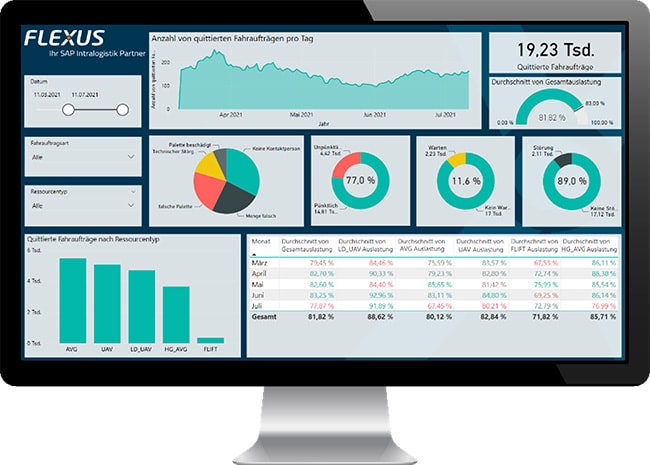
The Serpentines 2: Goods flow optimisation and analysis
The first challenge is to generate usable smart data from the big data gained through digitalisation in order to find starting points for optimisation. A popular tool for aggregating and visualising smart data are business intelligent tools [Link Jonathans Beitrag] such as Microsoft’s Power Bi.
If we now look at the actual optimisation of the flow of goods, this can take place in several stages. A first step can be a supporting visualisation, as it is done in the Flexus transport control system – FlexGuide for short. In the simplest form, the goods transports that are relevant for a forklift driver are displayed and their execution is documented. Furthermore, the system can also directly determine the next transport. In the background, various adjustable factors are considered that determine the priority. These factors can be, for example, the spatial proximity to the pick-up location or the urgency in relation to a temporal due date.
The next step is the dynamic (demand-oriented) optimisation of the Flexus tugger train. Here, it is not the individual resource – the tugger train – that is supported or guided, but rather an attempt is made in relation to the overall system – the plant – to drive as optimally as possible according to the customer’s wishes. Tours with demand-oriented routes are planned in advance based on the current transport demand and are always adapted to the current situation until they are processed by a tugger train.
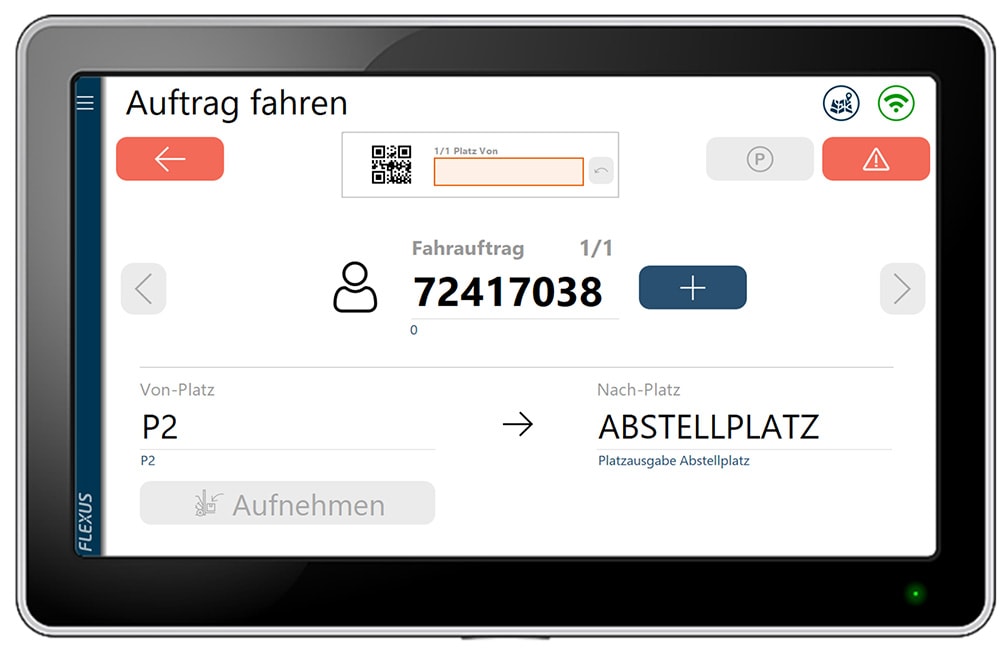
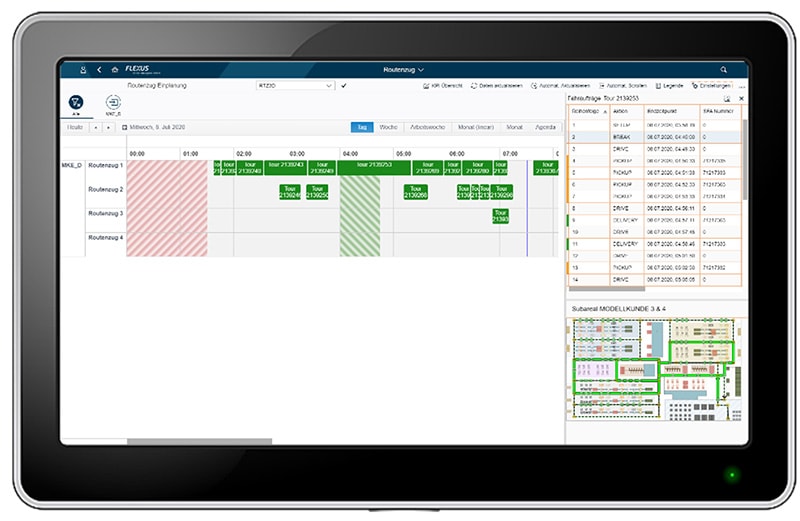
The advantage of the system is clearly a departure from rigid scheduled transport, because the tugger train is a train in name only. Furthermore, the system takes over the compilation of the optimal tour for the situation with knowledge about the goods and the tugger train fleet, which an employee cannot access or can only access with difficulty. All of this is an enormous relief for the employee and at the same time can lead to a strong increase in the throughput of goods in the factory or drastically improve the delivery reliability. It also significantly shortens the training phase of a new employee.
Both systems presented so far have their strengths but also limitations. In particular, they do not fully exploit the possibilities of the increasingly widespread driverless transport systems (AGVs). One approach to do this is the concept of a self-organised logistics network. The innovations of recent years in the field of industrial IoT, industrial edge computing, machine learning and 5G high-speed data connections form the supporting framework for this.
The Highway: FlowPro – a decentralised self-learning logistics network
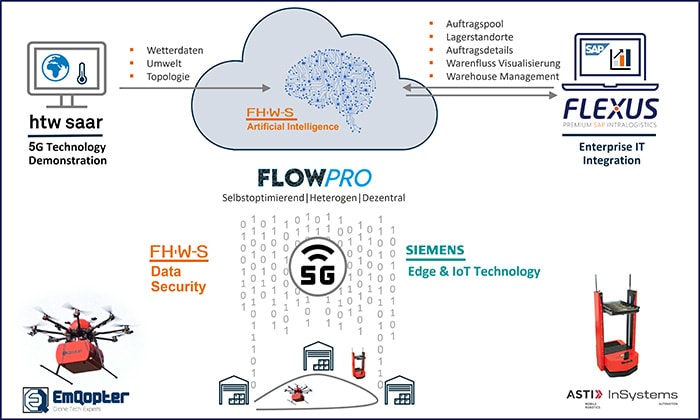
FlowPro represents the next step in optimising the flow of goods using AGVs. The FlowPro network is a transaction platform for a decentralised agent system in which all participants communicate with each other in almost real time and organise themselves. Here, each AGV is an agent in the system, which tries to work optimally from its context. The improvement of the overall system is pursued through a federated learning approach, i.e. a common goal is created with which all agents determine their optimum and this is improved collectively through a feedback loop. This maps the machine learning equivalent to the team spirit of the employees. The advantages of such a system are clearly failsafe and scalability. This is achieved through the decentralised agent approach, which shifts the computing load of a large server instance (as in the previously described overall system optimisation of the route trains) to many small hardware units. The FlowPro system is thus an efficient tool for managing the refinement of the flow of goods up to batch size -1 described at the beginning. Especially with large FTF fleets, FlowPro benefits from the dynamics of the agent system and adapts to order peaks situationally.
The project is currently still in the development phase and will probably be tested for the first time in a field trial in 2022. If you want to find out more now: www.flow-pro.de.

Dr. Markus Sauer (Siemens Technology)
Senior Key Expert Collaborative IoT
As part of his work at Siemens Technology, he is investigating new concepts, architectures, and technologies in the area of self-organizing, decentralized systems for future industrial scenarios, products, and solutions.
Dominik Grasser (Flexus AG)
AI Developer
Working at Flexus, he optimizes the intralogistics of our customers with appropriate optimization algorithms. The main application of this is in the optimization of forklifts, tugger train logics and the efficient control of AGVs.

